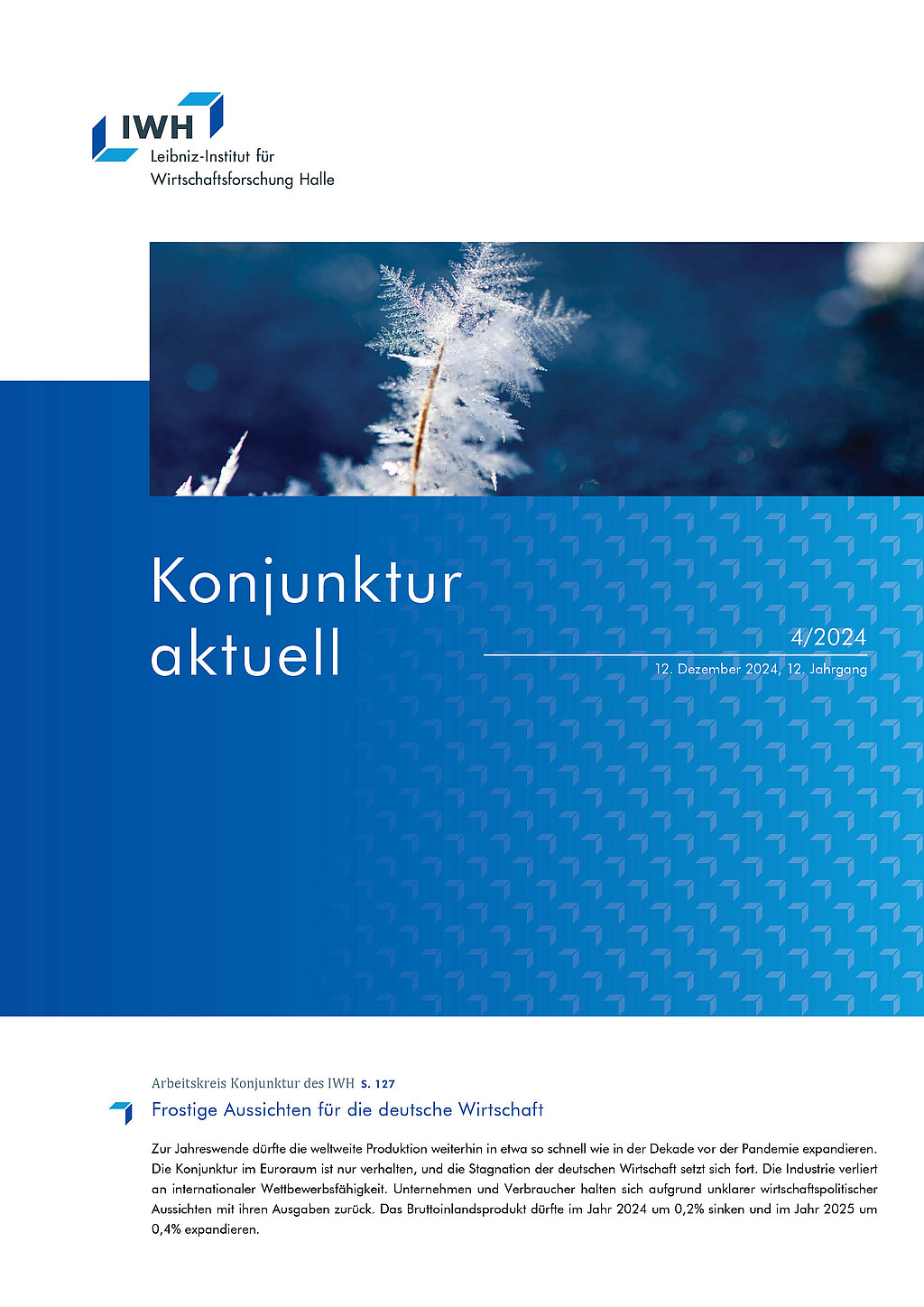Medium-term projection for the German economy and scenarios for achieving the targets of the Climate Protection Law
The production potential of the German economy will grow at an average annual rate of 0.3% until 2029, which is significantly weaker than in previous years. This is due to a less favourable development of all three factors: labour volume, capital stock and total factor productivity. “Potential growth will be dampened in particular by the decline in the volume of labour due to the shrinking working-age population,” says Oliver Holtemöller, head of the Macroeconomics Department and Vice President at the IWH.
The general government budget deficit in the years 2025 to 2029 is around 2% in relation to gross domestic product. Monetary transfers and social benefits in kind will increase more than nominal gross domestic product due to demographic factors, and this additional expenditure will be financed by higher social security contribution rates. The structural budget deficit is likely to exceed the EU threshold of 1.5% in the medium term.
Based on the long-term projection for production, we also estimate the extent to which CO2 emissions are likely to decrease, given the current legal situation. Greenhouse gas emissions are expected to fall slightly. “However, the legally required climate neutrality is likely to be missed by 2045 if no further measures are taken to reduce emissions,” says Oliver Holtemöller.
The effects of an emissions reduction that corresponds to the EU-level target of achieving net greenhouse gas neutrality by 2050 are analysed in two alternative scenarios: In the emissions volume fine-tuning scenario, it is assumed that non-market-based measures such as regulations are used in addition to CO₂ emissions trading to achieve the emissions targets. In the market price scenario, climate neutrality is achieved exclusively through CO₂ emissions trading with decreasing quantity restrictions across Europe. The stronger increase in energy prices compared to the fine-tuning scenario means stronger incentives for investments in research and development and faster energy-saving technical progress. The macroeconomic production loss required to achieve the emission targets is significantly lower than in the fine-tuning scenario, but it cannot be completely avoided. This also has consequences for compliance with the European debt rules, which focus more strongly on the debt ratio since their reform in 2024. Ceteris paribus, the debt ratio will be higher if the gross domestic product in the denominator of the ratio is lower.
The extended version of this projection contains three boxes (all in German):
Box 1: On the assumptions used for the projection
Box 2: The IWH medium-term projection and the new EU fiscal rules
Box 3: Macroeconomic model
Publication:
Drygalla, Andrej; Heinisch, Katja; Holtemöller, Oliver; Lindner, Axel; Sardone, Alessandro; Schult, Christoph; Zeddies, Götz: Mittelfristige Projektion der gesamtwirtschaftlichen Entwicklung und Szenarien für die Erreichung der gesetzlichen Emissionsziele. IWH, Konjunktur aktuell, Jg. 12 (4), 2024, 170-187. Halle (Saale) 2024.
New data set:
The IWH Forecasting Dashboard (ForDas) is an interactive platform for comparing macroeconomic forecasts from various institutes on the German economy.
Whom to contact
For Researchers

Vice President Department Head
If you have any further questions please contact me.
+49 345 7753-800 Request per E-MailFor Journalists

Head of Public Relations
If you have any further questions please contact me.
+49 345 7753-765 Request per E-MailIWH list of experts
The IWH list of experts provides an overview of IWH research topics and the researchers and scientists in these areas. The relevant experts for the topics listed there can be reached for questions as usual through the IWH Press Office.
Related Publications

Mittelfristige Projektion der gesamtwirtschaftlichen Entwicklung und Szenarien für die Erreichung der gesetzlichen Emissionsziele
in: Konjunktur aktuell, 4, 2024
Abstract
<p>Das Produktionspotenzial der deutschen Wirtschaft wächst mittelfristig (2023 bis 2029) mit einer jahresdurchschnittlichen Rate von 0,3% und damit deutlich schwächer als in den Jahren zuvor. Dies ist auf eine ungünstigere Entwicklung aller drei Faktoren (Arbeitsvolumen, Kapitalstock, totale Faktorproduktivität) zurückzuführen. Das potenzielle Wachstum wird insbesondere durch den Rückgang der durchschnittlichen Arbeitszeit gedämpft.</p>



